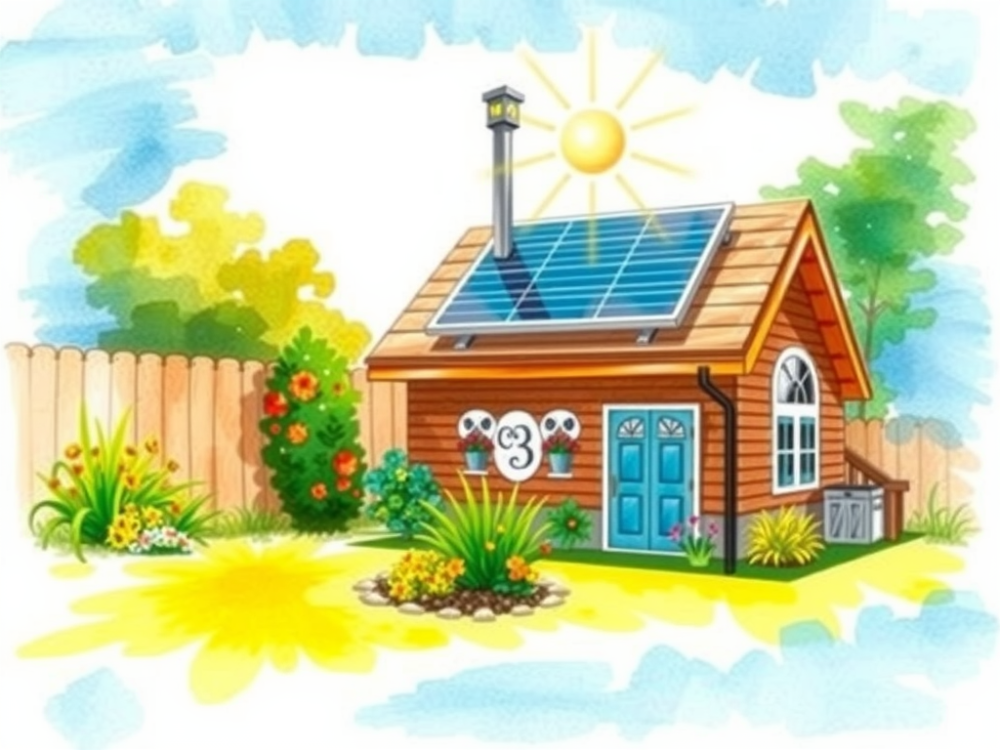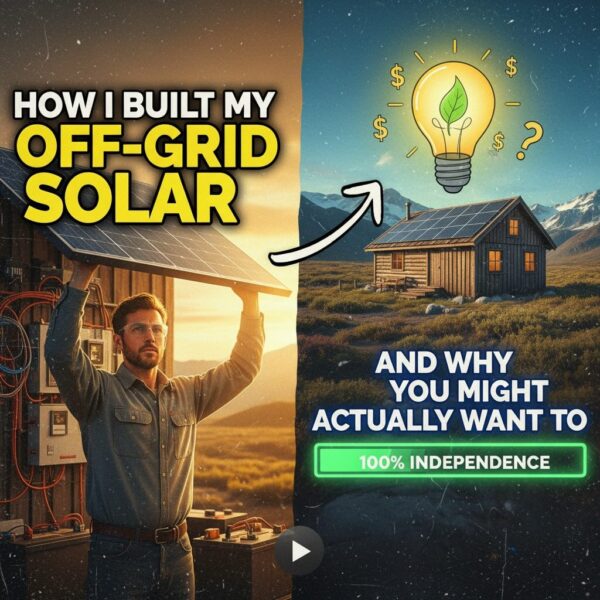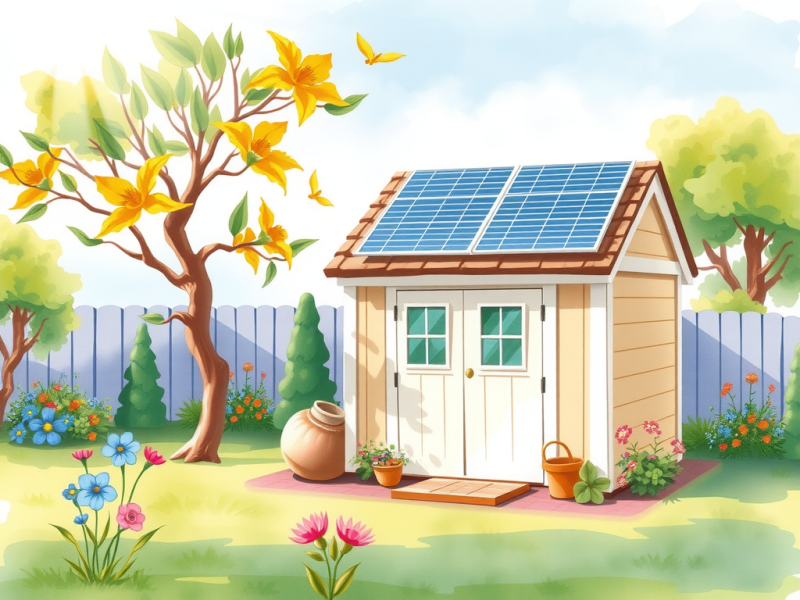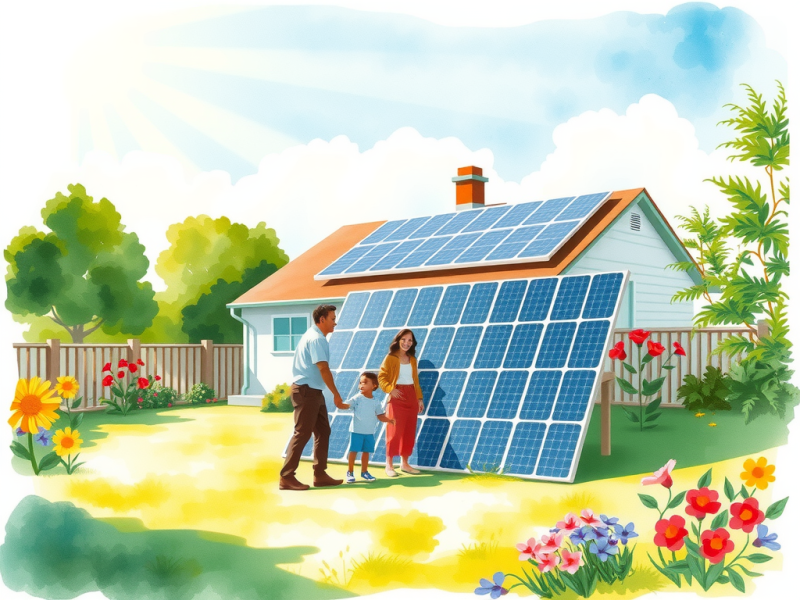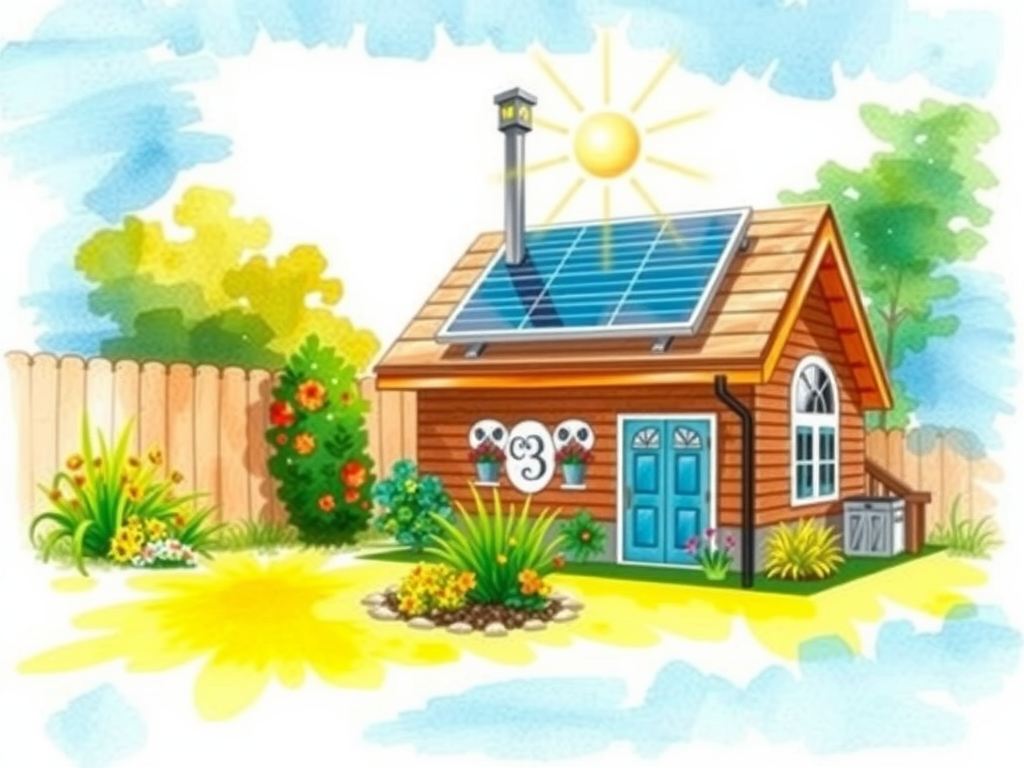
Cutting your energy costs while helping the environment is possible with a DIY solar energy system. This guide shows how to create a system that uses renewable energy to lower bills and increase energy independence.
Learning the essential parts and the installation process helps you enjoy sustainable living with long-term energy savings.
Click here to learn more about: how to make homemade soap at home
Solar Installation Basics
Starting your solar project means knowing key steps in the installation process.
Begin by evaluating your energy needs to determine the system’s size.
Planning your solar layout is important. After that, obtain all necessary solar permits and meet local regulations.
Choose quality components that include photovoltaic panels, battery backup, and inverters. Selecting experienced installers by reading reviews and ratings ensures you get reliable service.
Step-by-Step Installation Process
Evaluate your energy needs and plan system size.
Take measurements and sketch a layout.
Next, obtain necessary permits and follow local building codes.
Select suitable solar panels, a solar charge controller, batteries, an inverter, and all wiring materials. Install the racking system, whether on rooftops or ground mounts.
Then, mount and secure the solar panels.
Install the charge controller and batteries, making sure to follow manufacturer instructions. Use appropriate wiring for safety.
Next, mount and wire the inverter to batteries and circuits.
Conduct thorough testing to confirm correct connections and ensure operational status.
Regular Maintenance and Monitoring
Regular maintenance is vital for maximizing efficiency.
Check panel cleanliness and system wiring regularly. Monitor battery health to spot issues early.
Proper maintenance leads to better energy production and energy distribution.
Choosing the Right Installer
Selecting the right installer ensures proper setup and safety. Look for reviews and ratings from previous customers.
Compare experiences to find a skilled installer who meets your needs.
The journey to a DIY solar energy system is rewarding.
It allows homeowners to harness clean energy and achieve efficiency.
Be sure to follow guidelines and regulations to enjoy the long-term benefits of solar power.
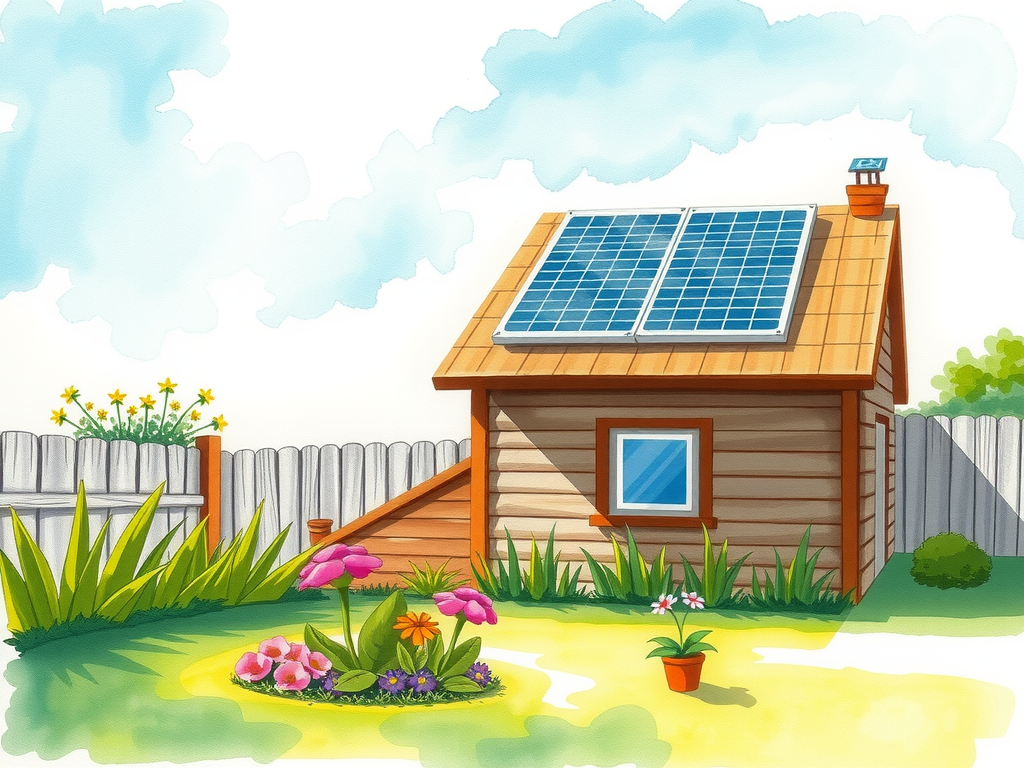
How Do Photovoltaic Panels Work
Photovoltaic panels are essential in energy production. They convert sunlight into electricity using the photovoltaic effect.
When sunlight strikes solar cells, it pushes electrons to generate direct current (DC) electricity.
Various panel types have different efficiency ratings, generally from 15% to 22%.
High-efficiency panels generate more electricity from the same sunlight. For example, a 300W panel can produce about 5 kWh in 5 hours on a sunny day.
This energy output can power several home appliances, including lights and a refrigerator.
Energy Production Example
A solar installation can significantly reduce energy costs. For a home solar system with multiple panels, daily energy production can reach several kWh.
This amount supports diverse energy needs and enhances sustainability in energy consumption.
Key Benefits Of Battery Backup Systems
Battery backup systems provide essential advantages for homeowners.
They enhance energy security during power outages by storing energy for later use.
Homeowners can enjoy cost savings on electricity bills, contributing to greater energy independence. A suggested tip is to install a 10 kWh battery.
This capacity is adequate for average households to cover daily needs during outages. It efficiently supports essential functions and boosts the reliability of the entire solar setup.
Cost Savings and Energy Independence
Battery backup systems can lead to long-term savings, decreasing reliance on the grid.
Using a battery backup not only improves energy security but also aligns with sustainable living practices.
By properly sizing and installing batteries, homeowners ensure efficient energy management throughout the day.
Photovoltaic Panels and Battery Backup Systems
- Photovoltaic panels can achieve efficiency ratings between 15% and 22%, maximizing energy production.
- A 300W solar panel can generate approximately 5 kWh in 5 hours of sunlight, powering multiple household appliances.
- Installing a 10 kWh battery backup can cover daily energy needs for average households during outages.
- Battery backup systems contribute to long-term cost savings and increased energy independence from the grid.
Exploring Energy Independence Options
Energy independence means living without reliance on traditional power sources. Off-grid living attracts many for its sustainable lifestyle and self-sufficiency.
Homeowners can generate their own energy using renewable resources, such as solar power.
Renewable energy lowers monthly bills significantly, potentially cutting costs by up to 50% in specific areas.
This lifestyle involves understanding key components like photovoltaic panels and energy storage solutions. For planning an independent energy system, consider resources like online guides and community forums.
These tools support your journey towards a successful offgrid setup and greater energy efficiency.
Key Components of Off-Grid Living
Key components include solar panels that capture sunlight and an inverter that converts DC to AC power. Deep-cycle batteries provide energy storage for use at night or during cloudy days.
Effective energy distribution ensures that all devices receive the power they need.
Resources for Planning
Many online resources exist to help you plan your independent energy system.
Community forums offer advice and shared experiences from others who have made the transition to off-grid living.
Use these resources to learn about solar project planning and gain insights into energy calculations.
What Is A Gridtied System
Gridtied systems connect your home to the local utility grid. This connection allows you to both consume and generate electricity.
Key components include solar panels that convert sunlight into energy, and an inverter that changes DC power to AC for home use. Net metering credits homeowners for any excess energy sent back to the grid.
This setup often lowers upfront installation costs through government incentives.
Benefits of Grid Connection
A gridtied system provides benefits such as reduced energy costs and continuous energy supply.
By generating your own electricity, you rely less on conventional power sources.
This boosts your overall energy savings over time.
Choosing the Right Utility Provider
Choosing the right utility provider can make a big difference in your energy costs. Look for providers with favorable rates and good net metering options.
An informed choice maximizes your energy savings and supports your shift towards sustainable living.
Energy Independence and Gridtied Systems
- Homeowners can reduce energy costs by up to 50% by utilizing renewable energy sources.
- Deep-cycle batteries are essential for energy storage, providing power during non-sunny periods.
- Net metering allows homeowners to receive credits for excess energy sent back to the grid, enhancing savings.
- Choosing the right utility provider can significantly impact energy costs and savings potential.
Offgrid Setup: Is It Right For You
Choosing an offgrid setup can lead to energy independence and sustainable living. Many homeowners generate their own power using solar panels.
The initial costs for quality solar installation and battery backup systems can be significant.
For example, a family in Colorado built an off-grid home with a solar array and deep-cycle batteries, achieving energy savings of over 50% compared to traditional utilities.
Evaluating these pros and cons is essential before deciding if an offgrid setup suits your lifestyle.
Consider how much sunlight your location receives, as this affects energy production.
- Pros: Energy independence, lower utility bills, and environmental benefits.
- Cons: High upfront costs, maintenance needs, and reliance on weather conditions.
Importance Of Energy Efficiency In Solar
Improving energy efficiency enhances the performance of solar energy systems. Efficient energy usage complements solar energy production. For instance, using LED light bulbs reduces energy consumption while ensuring your solar installation meets its energy goals.
Maximizing Home Efficiency
An energy audit helps identify areas for efficiency improvements. Small changes can lead to significant energy savings. Effective energy management makes sustainable living achievable for everyone.
Every bit of energy saved contributes to better solar performance.
Practical Tips for Efficiency
- Consider upgrading to energy-efficient appliances.
- Seal drafts and insulate your home to reduce energy loss.
- Regularly monitor your energy usage with solar monitoring tools.
Offgrid Setup and Energy Efficiency
- Homeowners can save over 50% on energy costs by using solar panels and battery systems.
- LED light bulbs can reduce energy consumption by up to 75% compared to traditional incandescent bulbs.
- Energy audits can identify efficiency improvements that lead to significant savings, often reducing energy use by 10-30%.
- Upgrading to energy-efficient appliances can save households hundreds of dollars annually on utility bills.
Tips For Solar System Maintenance
Regular upkeep ensures solar systems operate efficiently. Routine maintenance tasks are key to enhancing energy savings and energy efficiency.
Start by visually inspecting solar panels for dirt or debris every month.
Clean your panels using a soft brush and mild soap, particularly after heavy storms.
Cleaning schedules should ideally occur every six months for best results. Regular system checks include monitoring battery health and electrical connections, which help avoid larger issues.
Implementing these simple steps will prolong the life of your solar array and boost energy production effectively.
Importance of Panel Cleaning
Cleaning your solar panels can improve solar energy conversion by up to 30%. Dust, pollen, and bird droppings can block sunlight.
Regularly scheduled cleaning ensures that your system maintains peak performance.
Monitoring System Performance
Using solar monitoring tools can help track energy production.
Regular checks allow you to spot any issues early.
Keeping records of energy usage and performance helps in planning future energy needs.
Safety Checks
It’s essential to conduct safety checks on electrical wiring and connections. Inspect circuit breakers and ensure they comply with electrical codes.
This practice ensures both safety and the longevity of your solar installation.
Routine Maintenance Benefits
Routine maintenance leads to better solar performance. Keeping everything in check helps avoid costly repairs and maximizes the lifespan of your system.
Set reminders for inspections to maintain a consistent schedule.
By investing time in maintenance, you’ll enjoy greater energy independence and savings.
Solar System Maintenance
- Regular cleaning can enhance solar energy conversion by up to 30%.
- Routine maintenance helps prevent costly repairs and extends the lifespan of solar systems.
- Monitoring tools can track energy production and identify issues early.
- Conducting safety checks ensures compliance with electrical codes and enhances system safety.

